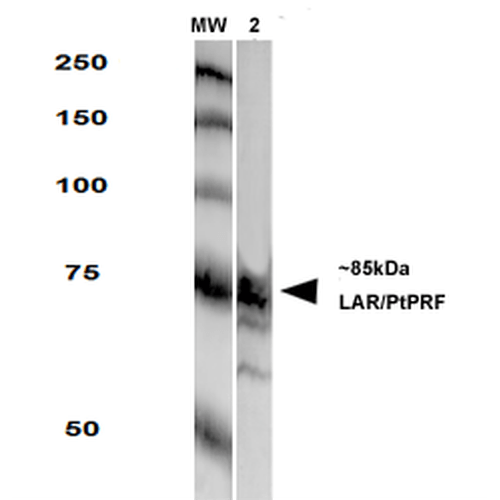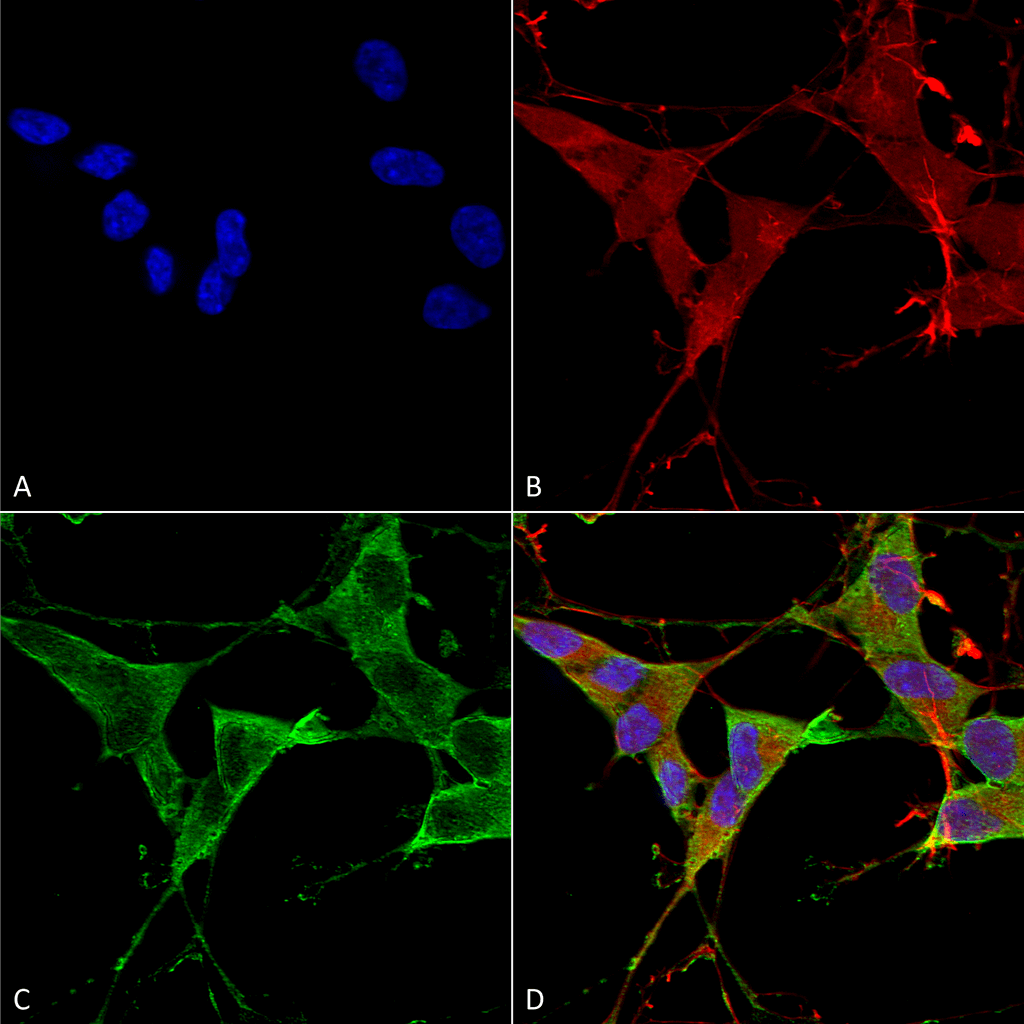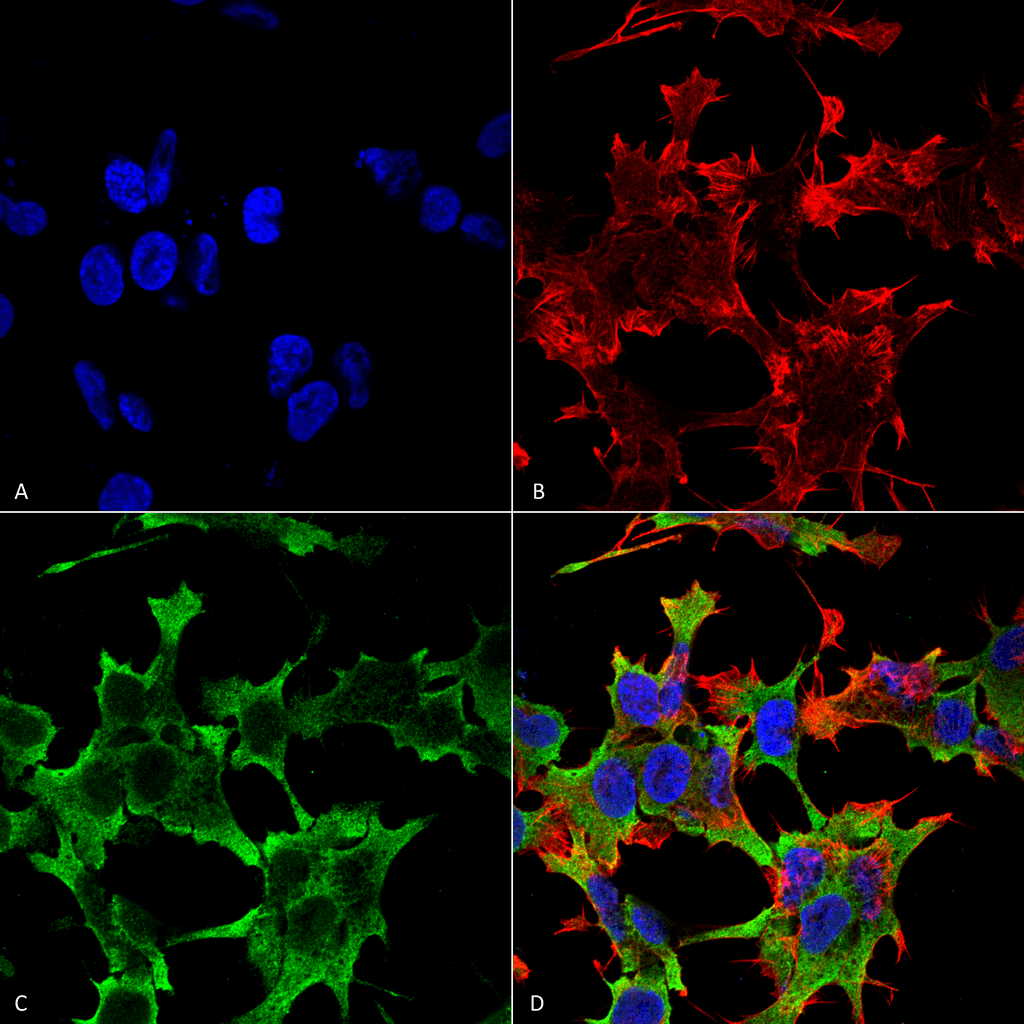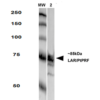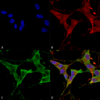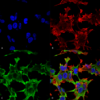Anti-Protein Tyrosine Phosphatase Receptor F (PTPRF) Antibody (56579)
$466.00
SKU: 56579
Categories: Antibody Products, Neuroscience and Signal Transduction Antibodies
Overview
Product Name Anti-Protein Tyrosine Phosphatase Receptor F (PTPRF) Antibody (56579)
Description Anti-Protein Tyrosine phosphatase Receptor F (PTPRF) Mouse Monoclonal Antibody
Target Protein Tyrosine Phosphatase Receptor F (PTPRF)
Species Reactivity Human, Mouse, Rat
Applications WB,ICC/IF
Host Mouse
Clonality Monoclonal
Clone ID S165-38
Isotype IgG2a
Immunogen Fusion protein corresponding to aa 1315-1607 (cytoplasmic C-terminus) of human PTPRF. This sequence is 97
Properties
Form Liquid
Concentration 1.0 mg/mL
Formulation PBS, pH 7.4, 0.1% sodium azide, 50% glycerol.
Buffer Formulation Phosphate Buffered Saline
Buffer pH pH 7.4
Buffer Anti-Microbial 0.1% Sodium Azide
Buffer Cryopreservative 50% Glycerol
Format Purified
Purification Purified by Protein G affinity chromatography
Specificity Information
Specificity This antibody recognizes human, mouse, and rat PTPRF.
Target Name Receptor-type tyrosine-protein phosphatase F
Target ID Protein Tyrosine Phosphatase Receptor F (PTPRF)
Uniprot ID P10586
Alternative Names EC 3.1.3.48, Leukocyte common antigen related, LAR
Gene Name PTPRF
Sequence Location Membrane; Single-pass type I membrane protein.
Biological Function Possible cell adhesion receptor. It possesses an intrinsic protein tyrosine phosphatase activity (PTPase) and dephosphorylates EPHA2 regulating its activity.; The first PTPase domain has enzymatic activity, while the second one seems to affect the substrate specificity of the first one.
Research Areas Neuroscience
Background PTPRF, like other members of the protein tyrosine phosphatase (PTP) family, is a signaling molecule that regulates a variety of cellular processes. PTPRF possesses an extracellular region, a single transmembrane region, and two tandem intracytoplasmic catalytic domains, and represents a receptor-type PTP. The extracellular region contains three Ig-like domains and nine non-Ig like domains similar to that of neural-cell adhesion molecule. PTPRF functions in the regulation of epithelial cell-cell contacts at adherents junctions as well as in the control of beta- catenin signaling. An increased expression level of PTPRF has been found in the insulin- responsive tissue of obese, insulin-resistant individuals and may contribute to the pathogenesis of insulin resistance. Two alternatively spliced transcript variants of this gene, which encode distinct proteins, have been reported.
Application Images




Description Western Blot analysis of Rat Brain Membrane showing detection of LAR protein using Mouse Anti-LAR Monoclonal Antibody, Clone S165-38 (56579). Primary Antibody: Mouse Anti-LAR Monoclonal Antibody (56579) at 1:250.

Description Immunocytochemistry/Immunofluorescence analysis using Mouse Anti-LAR/PTPRF Monoclonal Antibody, Clone S165-38 (56579). Tissue: Neuroblastoma cells (SH-SY5Y). Species: Human. Fixation: 4% PFA for 15 min. Primary Antibody: Mouse Anti-LAR/PTPRF Monoclonal Antibody (56579) at 1:100 for overnight at 4°C with slow rocking. Secondary Antibody: AlexaFluor 488 at 1:1000 for 1 hour at RT. Counterstain: Phalloidin-iFluor 647 (red) F-Actin stain; Hoechst (blue) nuclear stain at 1:800, 1.6mM for 20 min at RT. (A) Hoechst (blue) nuclear stain. (B) Phalloidin-iFluor 647 (red) F-Actin stain. (C) LAR/PTPRF Antibody (D) Composite.

Description Immunocytochemistry/Immunofluorescence analysis using Mouse Anti-LAR/PTPRF Monoclonal Antibody, Clone S165-38 (56579). Tissue: Neuroblastoma cell line (SK-N-BE). Species: Human. Fixation: 4% Formaldehyde for 15 min at RT. Primary Antibody: Mouse Anti-LAR/PTPRF Monoclonal Antibody (56579) at 1:100 for 60 min at RT. Secondary Antibody: Goat Anti-Mouse ATTO 488 at 1:100 for 60 min at RT. Counterstain: Phalloidin Texas Red F-Actin stain; DAPI (blue) nuclear stain at 1:1000, 1:5000 for 60min RT, 5min RT. Localization: Membrane. Magnification: 60X. (A) DAPI (blue) nuclear stain. (B) Phalloidin Texas Red F-Actin stain. (C) LAR/PTPRF Antibody. (D) Composite.
Handling
Storage This product is stable for at least one (1) year at -20°C.
Dilution Instructions Dilute in PBS or medium that is identical to that used in the assay system.
Application Instructions Immunoblotting: use at 1-5ug/mL. A band of ~85kDa is detected which represents the subunit containing transmembrane and intracellular domains.
Immunofluorescence: use at 10ug/mL.
These are recommended concentrations.
Endusers should determine optimal concentrations for their application.
Immunofluorescence: use at 10ug/mL.
These are recommended concentrations.
Endusers should determine optimal concentrations for their application.
References & Data Sheet
Data Sheet  Download PDF Data Sheet
Download PDF Data Sheet
 Download PDF Data Sheet
Download PDF Data Sheet

